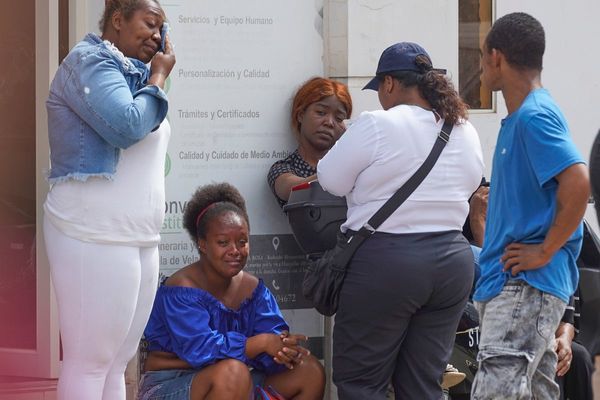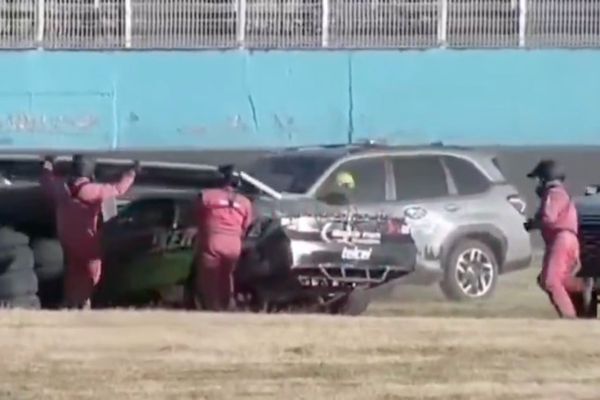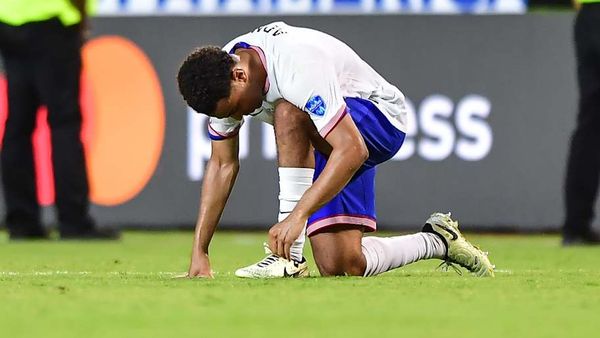
First, the good news. The Buffalo Bills traded away a wide receiver who’ll turn 31 years old in November and got back a second round pick.
The bad news: that receiver is Stefon Diggs, the one player outside of Josh Allen himself most responsible from turning the Bills’ quarterback from struggling, big-armed meme to legitimate MVP candidate.
And that second-round pick won’t arrive until 2025.
And the trade actually accelerated more money under an already crowded salary cap.
And the former All-Pro is headed to a rising AFC rival with a young quarterback of its own — exactly the kind of player Diggs has pushed to new heights throughout his NFL career.
We’ve agreed to terms on a trade that will send WR Stefon Diggs to Houston for a 2025 second round draft pick.
More details: https://t.co/qidbgR9zfQ pic.twitter.com/J3IHJeDxN9
— Buffalo Bills (@BuffaloBills) April 3, 2024
Wednesday’s trade between Buffalo and the Houston Texans is a win-now message from a Texans team that’s finally taking things seriously after stumbling through its Jack Easterby/Lovie Smith phase only to wind up at the top of the AFC South. It’s also a statement from the Bills; whatever Diggs brought to the field, he couldn’t provide the momentum to break his team through the limit between good and great.
Make no mistake; Buffalo needed Diggs. His chemistry with Allen is undeniable. His 160 targets last season were 61 more than Dalton Kincaid and nearly double third-place Gabe Davis (81), who is now a Jacksonville Jaguar. He had 445 receptions over the last four seasons. No other Bill has more than 166 in that stretch, and second place belongs to Cole Beasley, who had just two catches in 2022 and is no longer in the NFL.
Despite this lack of receiving diversity, Buffalo thrived en route to 48 wins and four straight AFC East titles — the franchise’s first division titles since 1995. As Diggs went, so did the Bills. And when opponents shut down the team’s WR1, Allen had little recourse. Here’s how Diggs performed in all four of the team’s playoff losses:
- 2021 vs. Kansas City Chiefs: Six catches, 77 yards, 0 TDs
- 2022 vs. Chiefs: Three catches, seven yards, 0 TDs
- 2023 vs. Cincinnati Bengals: Four catches, 35 yards, 0 TDs
- 2024 vs. Chiefs: Three catches, 21 yards, 0 TDs
Allen has a regular season passer rating of 96.9 over the last four years, but he’s only recorded a rating better than 87.0 once in those four season-ending losses. Conventional wisdom suggested that Diggs, staring down enhanced defensive scrutiny and a litany of double- and triple-teams, needed more help at wideout to free up Buffalo’s passing game. Instead, the Bills opted to cut bait altogether and start from scratch.
Seriously; there’s only one wide receiver on the roster who has caught a pass as a Buffalo Bill and it’s Khalil Shakir.
That’s a big deal! Buffalo is making a statement here, ignoring last year’s rally from 6-6 and getting ahead of any minor rebuild that awaits a team with a young(ish) quarterback firmly entrenched. Veteran departures have been the norm for the Bills this offseason thanks to a dire salary cap situation. Former Pro Bowlers like Jordan Poyer and Tre’Davious White were released, Micah Hyde remains a free agent and Leonard Floyd signed elsewhere. Still, none of those moves are as shocking as dealing away the guy coming off an 1,183 yard season.
There will, no doubt, be attempts to tie this move to Diggs’ difficult-to-decipher social media posts or the fact he seemed to take losses a little harder than anyone else on the roster. But those were managable quirks from a player who brought the kind of fire most coaches adore to the field.
Instead, this move can be attributed to several things. First off, there was no guarantee the Bills could find a proper WR2 to maximize its passing game while Diggs’ window of production wound down.
There isn’t a great track record when it comes to 190-pound speedsters in their 30s. Buffalo couldn’t afford to throw its hat into the Calvin Ridley sweepstakes and last year’s rally saddled the team with the 28th pick in his year’s draft — where the first tier of impact wideouts will be long gone and the second tier may be plenty picked over as well.
There’s also evidence Diggs is no longer the catalyst who once made Allen such a dangerous downfield passer. 2023 was a season of lows when it came to Diggs’ tenure in western New York.
69.6 receiving yards per game? His worst as a Bill. His average yards before catch dropped precipituously from 9.4 to 7.3 last season. That was his shortest target distance since 2018, when he was playing alongside Kirk Cousins in a low-risk Minnesota offense.
As Buffalo rallied from 6-6 and single-digit odds to make the playoffs with a 5-0 finish, Diggs averaged just 43 yards per game and an inefficient 5.5 yards per target — the latter of which would have ranked 121st among qualified NFL players over the entirety of 2023. While still impactful, there’s a reasonable doubt when it comes to Diggs’ status as WR1 — and if he’s not that guy, Buffalo’s kinda screwed to begin with!
So the Bills pulled off a Bill Belichick move and decided it was better to deal a popular veteran a year too early rather than a year too late. The problem is, well, this season is starting to look pretty grim for Buffalo.
We already talked about the team’s financial concerns and how it led to several veterans who’d been key to the team’s success signing elsewhere. Now the Bills carve out a $31 million chunk of 2024 salary cap space for a player who will suit up for the Texans this fall. Trading Diggs didn’t even create any breathing room; dealing him before June 1 actually cost the team $3.2 million in cap space by accelerating his now-dead money onto this year’s balance sheet, per Over the Cap.
Barring any major trades, Allen heads into a season where his top wideouts will be Shakir, Curtis Samuel and whomever the team presumptively selects at No. 28. Dawson Knox and 2023 first rounder Dalton Kincaid can share some of that workload at tight end, but Buffalo is currently saddled with a quarterback who has one of the biggest arms in the NFL and no trustable deep threat to whom he can throw.
That’s a team that may be unable to fire back in any shootouts a depleted defense may create. The rest of the AFC East is slightly untrustable right now, but it’s looking like the Bills’ streak of division titles will end unless they crush this year’s draft.
Fortunately, that could just be a gap year. Diggs’ departure will help alleviate what had been a bottom-four cap situation for 2025. The pick coming back in this trade doesn’t belong to the ascending Texans but the rebuilding Minnesota Vikings, who’ll likely be starting either a rookie quarterback or Sam Darnold this season. Any dropoff, which loomed even before dealing Diggs, may be temporary.
So, yes, 2024 will probably be a bad year in Buffalo. But the Diggs trade, as bad as it looks on the surface, makes sense for a team in a tough situation. The Bills couldn’t find the personnel to help Diggs take this team to a Super Bowl. Instead of running it back and risking the same outcome, they switched up their stance and maximized their return on a 30-year-old wideout in what looked to be a down year anyway.
It’s not great, but it’s OK. Buffalo is descending into the crevasse. It may have been the team’s best option to avoid the low-rumbling avalanche that awaits.







